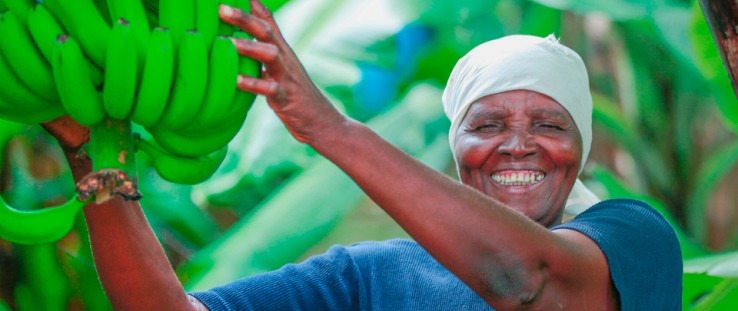 Thanks to the introduction of good agricultural practices, high-quality seedlings and contract farming, Selina Tsanga can pay for her family’s food, medicine and education. She is also using her additional income to invest in her farm.
Fintrac Inc.
Thanks to the introduction of good agricultural practices, high-quality seedlings and contract farming, Selina Tsanga can pay for her family’s food, medicine and education. She is also using her additional income to invest in her farm.
Fintrac Inc.
 Thanks to the introduction of good agricultural practices, high-quality seedlings and contract farming, Selina Tsanga can pay for her family’s food, medicine and education. She is also using her additional income to invest in her farm.
Fintrac Inc.
Thanks to the introduction of good agricultural practices, high-quality seedlings and contract farming, Selina Tsanga can pay for her family’s food, medicine and education. She is also using her additional income to invest in her farm.
Fintrac Inc.
For 63-year-old widow Selina Tsanga, life had been full of hard work and daily challenges. She used to rise at 5 a.m. every day to work on her small farm, growing maize without access to irrigation. “We had to earn our living through sweating,” she says.
Tsanga lives in Mutema, a rural village in Chipinge district in Zimbabwe’s southern Manicaland province. Farmers in Chipinge live in one of the country’s harshest climates, where seasonal rainfall is less than 500 millimeters (19 inches), making meaningful production of field crops nearly impossible without irrigation. Average temperatures in the region have been on the rise with erratic rainfall, further exacerbating drought-like conditions. As a result, the district is regularly hit by devastating food and nutrition crises.
Feeding three orphaned grandchildren and two children still living at home was a daily challenge for Tsanga.
“Due to the harsh climate, crop farming was like gambling with nature,” she said. “Relying on the government’s relief food was only a temporary solution that did not solve our larger issues.”
To address this all-too-familiar situation, USAID began working with a commercial banana company, Matanuska, to develop 60 new hectares of banana production for small-scale farmers in Mutema. Zimbabwe Agricultural Income and Employment Development (Zim-AIED), a five-year, $36 million program, helps farmers like Tsanga rethink their livelihoods as a business. The program contributes to efforts throughout the region to reduce poverty and undernutrition, which are key objectives of Feed the Future, the U.S. Government’s global hunger and food security initiative.
Tsanga says her 0.05 hectare demonstration plot (roughly 5,000 square feet) has changed her life. So far this season, she has harvested and sold 2,300 kilograms of bananas earning her more than $500 in net income, compared to her previous average income of $200 per season. She has another, larger plot of bananas on which she is employing good agricultural practices she learned from Zim-AIED. With her cumulative harvests, she expects to earn an income of more than $3,000 from her banana crop this year.
With this kind of income, Tsanga can feed her entire family and buy clothes, medicine and school supplies for her grandchildren.
“I can purchase sugar, cooking oil, soap and flour—a development I never dreamt of in my life,” she said. She has even built a modest new home for her family.
Zim-AIED provides seeds, plants, fertilizers, affordable loans and training on a cost-recovery basis to help farmers commercialize their production. The program also provides training and technical assistance to improve food security and increase household incomes of small-scale farmers throughout Zimbabwe. Through its four agricultural and market hubs, Zim-AIED focuses on increasing productivity and market access for maize, paprika, bananas, sugar beans, export horticulture, processed products and livestock.
In Mutema, Matanuska agreed to buy bananas harvested by farmers participating in the program at $0.33 per kilogram. This represents new income for these farmers, as they are growing bananas on previously uncultivated land.
“By the end of the Zim-AIED program in 2015,” says Chief of Party Joe Sanders, “Zim-AIED will have increased the incomes, employment and food security for 180,000 rural Zimbabweans."
Farmers are now earning new income from both food crops grown for home consumption and from production and marketing of higher-value cash crops under contract. The program is generating additional income through new employment opportunities in the agricultural sector and contributing to improved food security.
“By focusing on a commercial approach, Zim-AIED is ensuring long-term sustainability of the dramatic income increases we have already seen. Helping farmers improve their productivity and quality is an important first step, but we also have to make sure they have access to reliable markets. The Mutema banana project is a key example of how and why this approach works,” said Sanders.
Putting Business in Agribusiness
To invest in developing agribusinesses, Zim-AIED—implemented by Fintrac Inc.—is establishing links with banks and microfinance institutions to provide credit and low-interest loans to farmers. In Mutema, farmers also receive training in business skills, including recordkeeping, budgeting and the basics of contract farming.
“This new knowledge to look at farming as a business, and the trainings in crop budgeting and marketing have changed my farming enterprise,” said Budai Muteiwa, another Mutema farmer. “Before, we did not treat farming as a business and, as a result, we could not get any profits.”
Muteiwa has sold nearly $3,000 worth of bananas this season. Before the program’s interventions, Muteiwa and other farmers earned an average of $200 to $400 per year.
And they are learning to work together to maximize profits. For example, when the first allotment of banana plantlets was ready for transplant from the nursery, the farmers worked in groups of 36 to cover 60 hectares. By dividing tasks like digging, fertilizing and tilling among the group, they accomplished in weeks what could have taken months.
“By investing in the development of agribusinesses, families will have a more consistent source of food and income throughout any given year,” said Kennedy Zimunya, a Zim-AIED field manager. “In the long term, these farming activities help communities withstand future food crises, and increase income-earning opportunities.”
For farmers like Tsanga, the proof is in her pocket and on her table.
“There have been projects in my village before and there may still be a few others, but there has not been another project like the banana one, which has pulled us out of extreme poverty, malnutrition and hunger,” she said.
Hard Work Pays
In 2011, Zim-AIED began revitalizing the 60 hectares of land in Mutema that had been badly damaged during a 2000 cyclone. Today, there are 240 plot holders on this land, all of whom are learning good agricultural practices and modern production technologies.
Mutema farmers received tissue-cultured banana seedlings from South Africa, which they kept in an on-site nursery until the plantlets were ready for transplant. With support from Zim-AIED, the farmers installed a micro-jet irrigation system, which supplies small quantities of water directly to the base of the plant, to maximize use of available water from boreholes that had been lying idle since the cyclone hit.
The farmers also learned proper application of fertilizers that can help quadruple yields of their banana crops. At these yield levels, roughly 40 tons per hectare, smallholder farmers are now able to compete with commercial producers.
All the farmers are planning to repay the loans they received for the seedlings, fertilizer and other inputs in full.
Tsanga was the first female farmer to join the program at Mutema. Like many women in Zimbabwe, she had little access to land or economic opportunities outside of subsistence farming. The program addressed both needs.
Her eldest son, 40-year-old Tafadzwa, left his job with a transport company in Harare, the capital, to take up farming again on the family plot. Tsanga is making such a good living from growing bananas that her family now sees farming as a viable business.
“Tafadzwa came home because at last I am making real money,” she said. “He wants to help me on the farm now so that we can prepare more land for the banana crop.”
Tsanga is planning to double her plot size and diversify into other high-value crops, such as sugar bean and tomatoes. “Farming has brought happiness to my family,” she says. “I don’t feel the effects of price increases on food as do other people in towns. Besides, although farming is rigorous, it’s enjoyable.”
This article was written by staff members of Fintrac Inc.







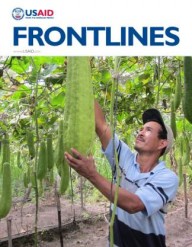

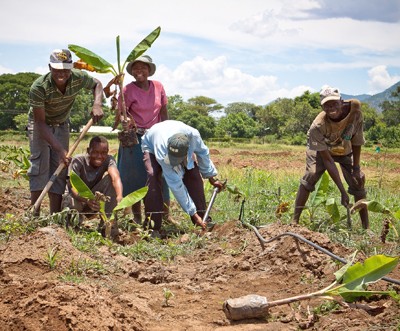
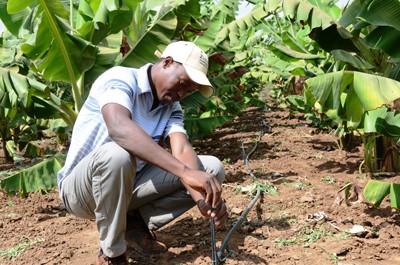

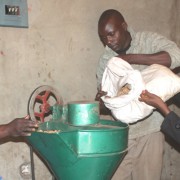
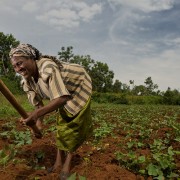
Comment
Make a general inquiry or suggest an improvement.